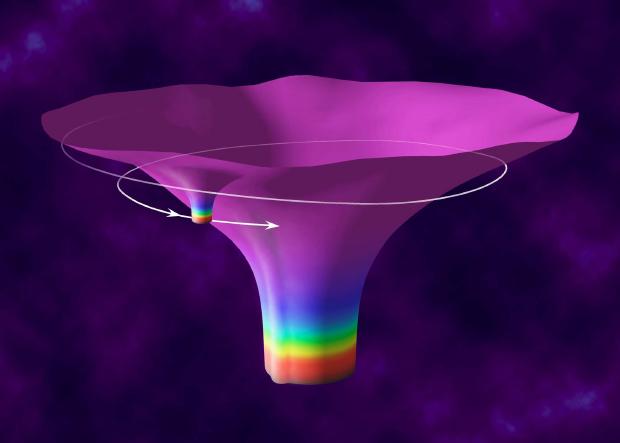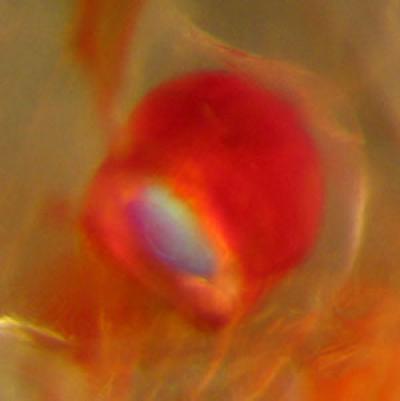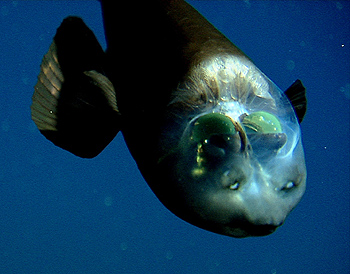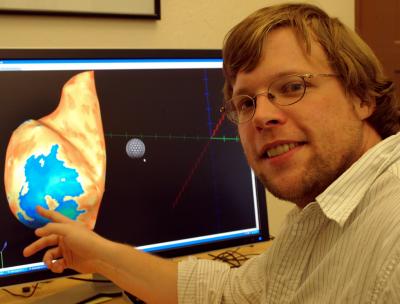The rotating black hole has been described as one of nature's most perfect objects. As described by the Kerr solution of Einstein's gravitational field equations, its spacetime geometry is completely characterized by only two numbers — mass and spin — and is sometimes described by the aphorism "black holes have no hair.''
A particle orbiting a rotating black hole always conserves its energy and angular momentum, but otherwise traces a complicated twisting rosette pattern with no discernible regularity.
The ten warmest years on record have all occurred between 1997 and 2008 but the 2008 temperature in the US was not much different than the 1951-1980 mean, which makes it cooler than all the previous years this decade, say climatologists at the NASA Goddard Institute for Space Studies (GISS) in New York City.
The phenomenon of light emission by living organisms, bioluminescence, is quite common, especially in marine species. It is known that light is generated by chemical reactions in which oxygen molecules play an important part. In the animal world, these chemical reactions take place in special luminescent cells called photocytes. These are aggregated into complex light organs, in which the intensity of light is regulated by nerve impulses, and in which light can be modulated with the help of reflectors, lenses and filters. By these means, organisms can adjust the wavelength, diffusion and intensity of light according to need. But the exact mechanisms behind these processes remain shrouded in mystery.
Researchers at the Monterey Bay Aquarium Research Institute recently solved the half-century-old mystery of a fish with tubular eyes and a transparent head. Ever since the "barreleye" fish Macropinna microstoma was first described in 1939, marine biologists have known that its tubular eyes are very good at collecting light. However, the eyes were believed to be fixed in place and seemed to provide only a "tunnel-vision" view of whatever was directly above the fish's head. A new paper by Bruce Robison and Kim Reisenbichler shows that these unusual eyes can rotate within a transparent shield that covers the fish's head. This allows the barreleye to peer up at potential prey or focus forward to see what it is eating.
People differ from one another in millions of ways. For starters, there is eye color, hair color, body build, and tendencies toward certain diseases and conditions. We know that genes determine these differences. Now, we also are learning that genes affect how our bodies respond to disease. Through the study of genetic links between patients and chronic diseases, Geisinger Health System researchers are hoping to gain a better understanding of how to prevent, diagnose and treat these diseases.
People voluntarily pick what information they store in short-term memory. Now, using functional magnetic resonance imaging (fMRI), researchers can see just what information people are holding in memory based only on patterns of activity in the brain.
Psychologists from the University of Oregon and the University of California, San Diego, reported their findings in the February issue of Psychological Science. By analyzing blood-flow activity, they were able to identify the specific color or orientation of an object that was intentionally stored by the observer.
 Study: Caloric Restriction In Humans And Aging
Study: Caloric Restriction In Humans And Aging Science Podcast Or Perish?
Science Podcast Or Perish? Type 2 Diabetes Medication Tirzepatide May Help Obese Type 1 Diabetics Also
Type 2 Diabetes Medication Tirzepatide May Help Obese Type 1 Diabetics Also Life May Be Found In Sea Spray Of Moons Orbiting Saturn Or Jupiter Next Year
Life May Be Found In Sea Spray Of Moons Orbiting Saturn Or Jupiter Next Year









